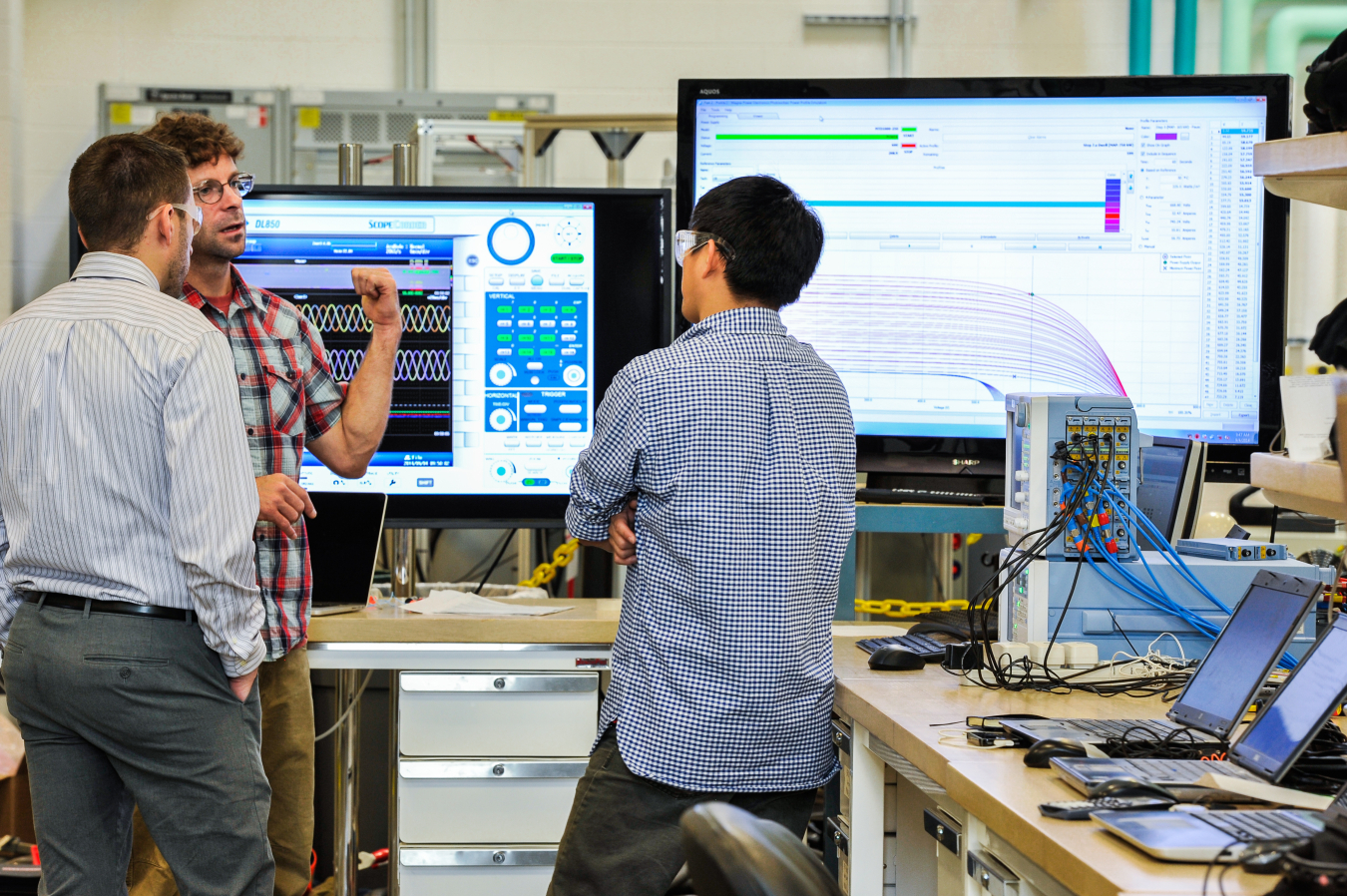As rooftop solar power systems increasingly pop up on homes and businesses across the country, a new challenge is emerging: how to integrate greate...
Office of Critical Minerals and Energy Innovation
January 5, 2015
National Renewable Energy Laboratory engineer Greg Martin (from left) works with Solectria engineers Jonathon Smith and Jihua Ma testing Solectria's smart inverter at the Energy Systems Integration Facility in Golden, Colorado.
As rooftop solar power systems increasingly pop up on homes and businesses across the country, a new challenge is emerging: how to integrate greater amounts of distributed solar generation so more consumers can safely and reliably reap the benefits of this clean, renewable energy source. Nowhere is this deployment growth and challenge more apparent than for Hawaii’s utilities – Hawaiian Electric Companies – where solar power systems are feeding about 20 times more power into electrical grids than on average in the mainland United States.
Generally, rooftop photovoltaic or PV systems connect to medium-voltage distribution grids, which are connected to high-voltage transmission lines, with one-way power flow. With high amounts of distributed solar, utilities like Hawaiian Electric are becoming concerned that solar generation could sometimes exceed load demand resulting in over-voltage and reverse power flow, which could potentially cause service disruptions. In Hawaii, about 2,700 potential solar-powered homes are on circuits that have solar generation exceeding the minimum day-time load, so those homes have not been able to install and connect PV systems to the grid.
To gain a better understanding about how solar power systems interact with utility distribution systems and enable more homes with solar to connect to the grid safely, the Energy Department’s National Renewable Energy Laboratory (NREL) and SolarCity – the nation’s largest solar power provider – recently teamed up in collaboration with Hawaiian Electric to analyze high-penetration solar scenarios and address operational issues using advanced computer modeling.
Specifically, Hawaiian Electric and SolarCity are testing advanced inverters – that convert the direct-current power of the solar panels into the alternating current used by the power grid – at the Energy Systems Integration Facility at NREL in Golden, Colo. Advanced inverters include features that can help the power grid respond to grid disturbances, such as the loss of a power plant or a large load tripping offline.
Recent tests have examined scenarios in which large loads trip offline, causing the grid to momentarily exceed its normal operating voltage, and the results were positive enough to allow Hawaiian Electric to start approving solar power systems for customers seeking to connect to distribution lines with high penetrations of solar power.
These new customers will need advanced inverters, but the impact is significant, as it will allow at least 2,500 additional customers to connect their solar power systems to the Hawaiian Electric grid by next April.
This partnership and a previous collaboration between Hawaiian Electric and SolarCity with the University of Hawaii to demonstrate smart inverters in the field were supported by the Energy Department’s SunShot Initiative. In support of the SunShot goal, these projects are helping researchers and utilities better understand how to use solar technologies in a safe, reliable and cost effective way. Learn more about how NREL has teamed up with SolarCity to maximize solar power on electrical grids.


